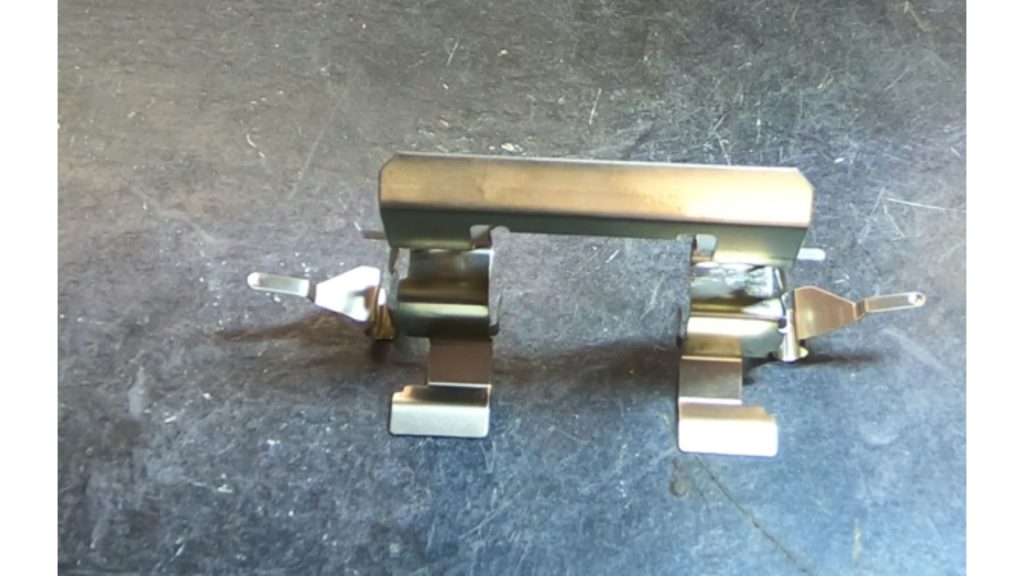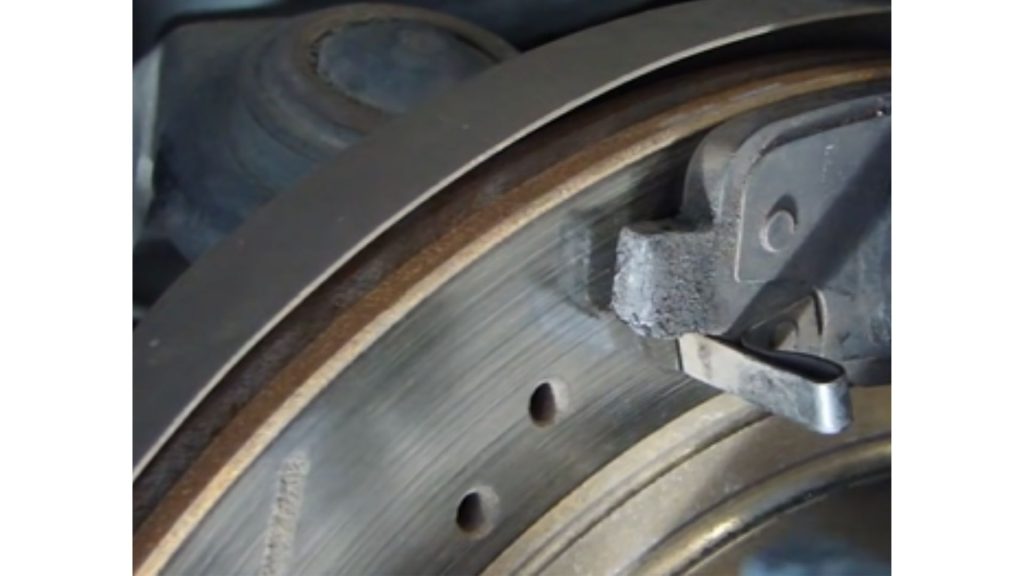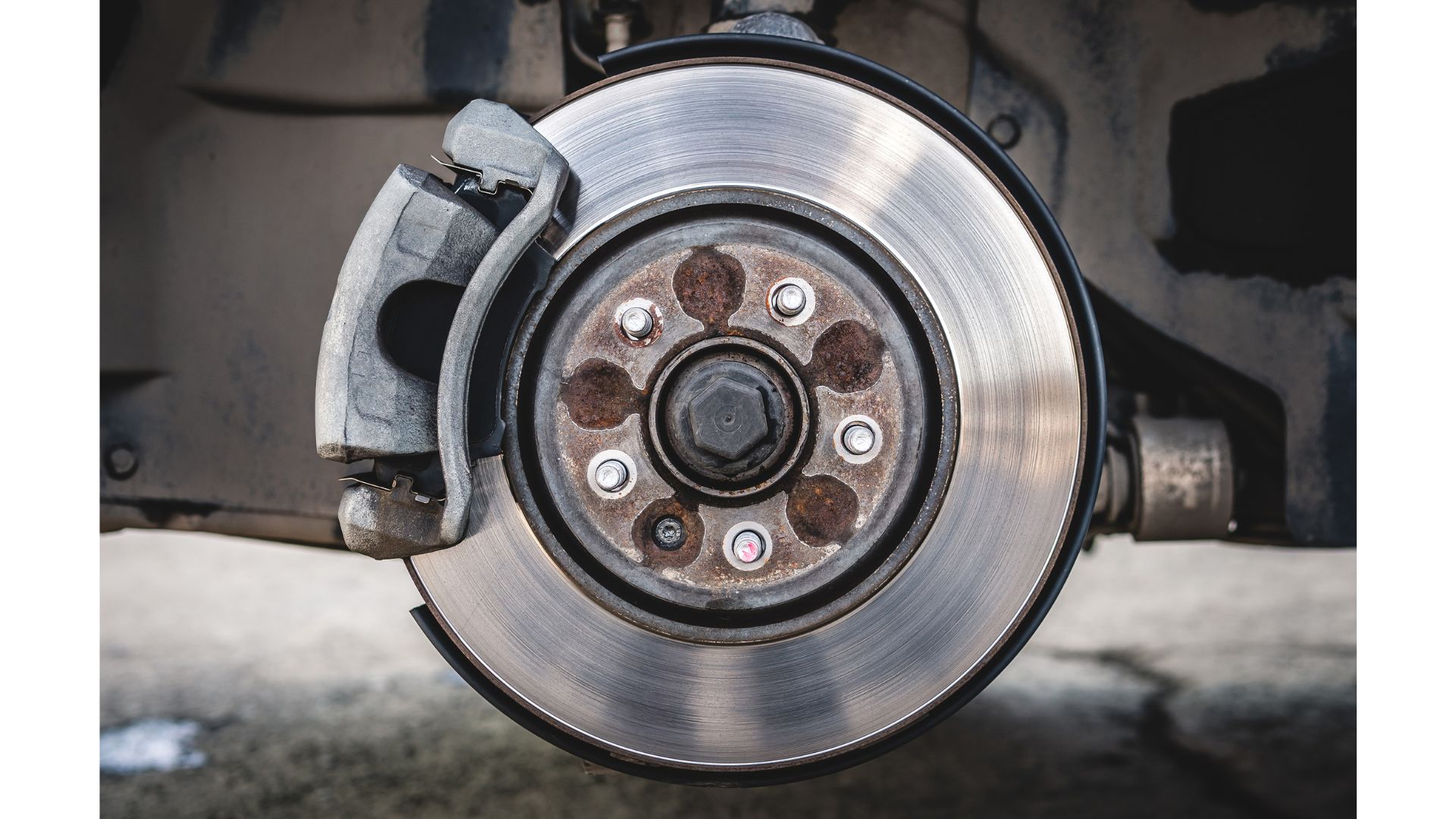If you opened a box and all the brake pads inside look alike, you’re probably wondering why one has a clip. Does that clip even matter? Will it make a difference to the installation process? Consider the following:
1). So Many Clips
First of all, you can’t ask a mechanic to tell you what the clip does, especially over the phone. If you do, they will ask you to identify the clip in question because the brake system has many items that technicians classify as ‘Clips.’

One example is abutment clips that provide a uniform surface for the brake pads. Your abutment clips may include fingers that secure the pad. These clips have an anti-rattle feature.
Retaining clips are the most important of the bunch. This aluminum or steel item prevents the pad from moving around.
More than likely, the squealer clips are your primary interest.
2). What The Squealer Clips Do

‘Squealer Clips’ doesn’t tell you how these items help you. The term ‘Wear Indicator Clip’ is probably more descriptive. It is a metal tabs that protect the braking system by squealing when the brake pads wear out.
How do they track a pad’s health? As the pad wears out, the clip comes gradually closer to the metal rotor until they touch. Once that happens, the clip will generate a squealing sound, letting you know that a pad’s thickness has deteriorated to unsafe levels.
The noise is irritating but prevents the worn-out pad from ruining the brake disc. Installing the pad in the wrong place can put your braking system at risk by eliminating this warning.
3). Where To Install The Brake Pad With The Clip?
You install the brake pad with the wear indicator clip inside (on the caliper).
What if you install the pad with the clip on the wrong side? Nothing will happen. Don’t expect the pad to break or wear out faster than usual. However, you can’t rely on the squealer clip to warn you when the pad wears out.
As such, you check the pads more frequently to prevent the disc from suffering permanent harm. Even without this clip, the pad will continue to do its work.
4). Why The Inside Brake Pad Wears Out Faster
Mechanics place the pad with the clip inside because the inner pad wears out faster. But why is this?
- The inner pad absorbs the brunt of the force when a car stops. The piston that allows the brake pad to clamp the rotor is found at the rear of the assembly.
- Sometimes, the piston stops floating because of a seized caliper guide pin.
- A damaged seal can prevent the caliper piston from returning to a rest position.
- The master cylinder can fail.
According to the experts at Brake and Front End, the difference in wear between the inner and outer pads is small (2 to 3mm). A significant difference in the rate at which the inner and outer pads wear out should worry you. Common culprits include the following:
- The brake rotor has different thickness levels. As a result, the brake pad that touches the flatter sections of the rotor deteriorates faster, leading to uneven wear and tear.
- Slamming the brakes frequently can cause one brake pad to wear out faster than the other. You should also look for signs of corrosion on the brake caliper, especially if it sticks.
- The brake caliper that pushes on the brake pad has a rubber seal that wears outs. Once that happens, it can no longer pull the caliper piston back. This compels the pad to remain in contact with the rotor.
- The piston and guide pins keep sticking because of debris on the brake caliper. This interferes with the piston’s ability to slide.
- The slide pins can corrode. This is problematic because they allow the caliper to slide. A corroded slide pin stops the caliper’s movements.
- You misaligned the brake pads during installation. This forces them to make uneven contact with the rotor, hence the uneven wear.
Take the car to a mechanic if you notice a tangible difference in the rate at which the inner and outer pads wear out.
5). Does Every Brake Pad Have Anti-Wear Clips?
Most brake pads have wear indicator clips. Your mechanic of choice may call them a different name, but the function they serve remains unchanged.
Their absence shouldn’t scare you because the brake pads can still work without these clips. However, they are highly convenient because they keep you apprised of your brake pads’ health. The absence of wear indicator clips should encourage you to question the quality of a new brake pad set.
How Do You Install Brake Pads With Clips?
The process of installing brake pads doesn’t change. You can expect the following:
- Find a suitable brake pad set. If your previous set had anti-wear clips, ensure the new set has these components. A counterfeit product may not offer squealer shims. This is why you should ask the car’s manufacturer for a recommendation. You don’t want to buy the wrong pad set.
- Turn the car off and let it cool. Otherwise, the heat from the brake system may burn you.
- Loosen the lug nuts on the wheel and lift the car with a jack. Adding blocks behind the other wheels will stop the vehicle from rolling.
- Remove the lug nuts and then the wheel.
- Remove the caliper bolts.
- Remove the old brake pads. This step shouldn’t present a challenge regardless of whether the pad clips or snaps into the slot. Some pads require more force than others to pop out.
- Push the new brake pads into place.
- Put the caliper back.
wikiHow has pictures that illustrate this process for amateurs that need additional guidance. But what about the wear indicator clips? This is what you should know:
- According to How-A-Car-Works, you will see these components behind the pad. The retaining clips will hold them in place.
- It is common practice to apply brake grease to the back of the brake pad. You can do the same to the anti-squeal clip’s front. Some people use an anti-squeal compound.
- If there’s anything you need to know about installing the clips, the arrows on the clips will let you know. Make sure the arrow points in the direction of forward rotation when you install the clips.
The presence of an indicator clip won’t complicate the installation process. The clips will only confuse you if you’ve never installed a brake pad.

